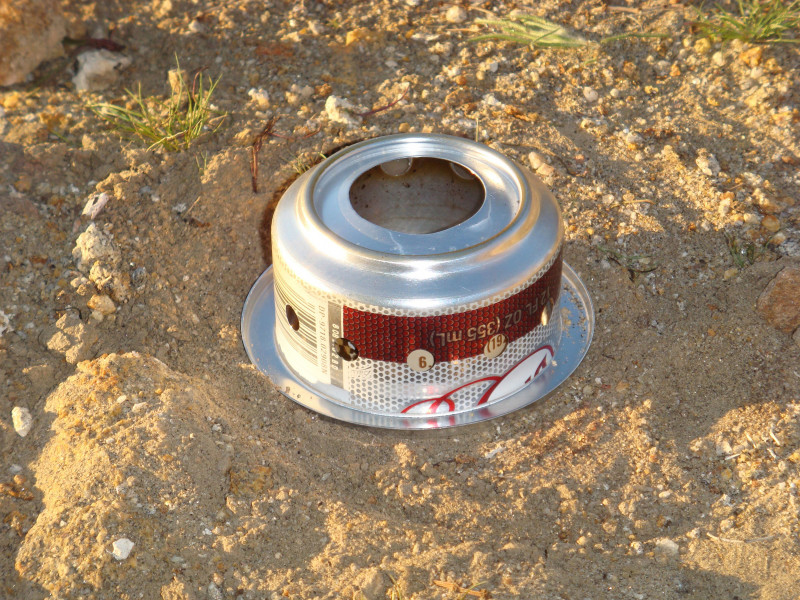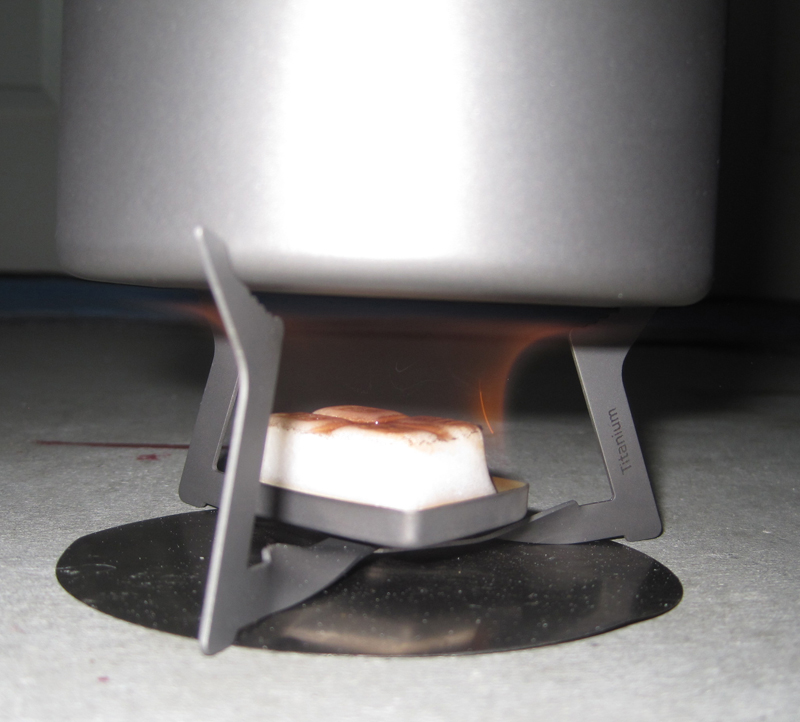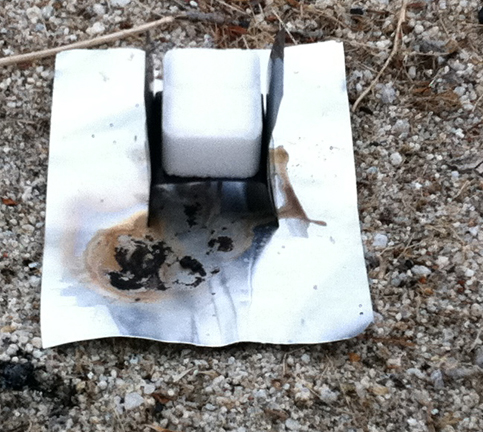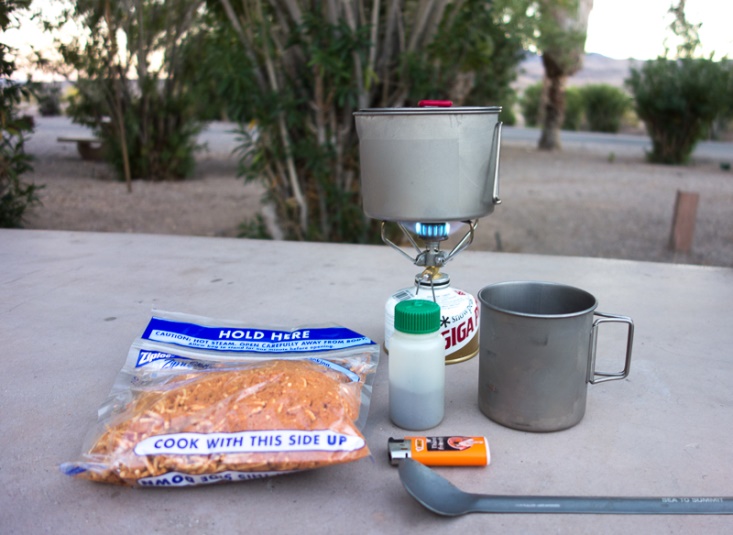I have few backpacking acquaintances, fewer than I have fingers on my hands. And I have even fewer backpacking friends, and an even smaller circle of close friends. That’s how it should be. Just because someone likes you on Facebook or is your friend on one of the other social media sites, doesn’t mean they are true friends.
Anyway, my few backpacking acquaintances and friends know I go screw-shit when I see so-called gear or outdoor experts operate a stove in an unsafe manner. One of these fine folks (my acquaintances – not the so called experts) emailed me a “stove” picture. No subject in the email, no comments; nada. Just a picture. Guess he thought it would piss me off.
I don’t know where the picture came from, who took it, or who is operating the stove. Also, I don’t know the location, when it was taken, what the weather and surrounding areas are like.
So it would be unfair to present any opinions or conclusions, for they would be taken out of context without knowing the whole story or the complete picture.
Since someone did take their time to send me a stove picture, I thought it would be appropriate to discuss stove use out here in the western US, or more precisely, the stove bans we have in many forests and wilderness areas.
DROUGHTS & FIRE SUPPRESSION
As I have written before, aside from the 4 year drought we are in, we face a danger that is exacerbated by over 100 years of fire suppression, meaning we fight almost every single forest fire that occurs. What this leads to is a forest that cannot handle a fire; fire that was once a force to keep our forests healthy. This suppression has led to an immense layer of ground level fuel, which when a forest fire starts energizes an intensely unnatural hot fire that kills trees that would normally survive and prosper after a fire. This is not a criticism of our past land managers – their intentions were good – but the consequence produced unintended results.
Given our current situation, land managers in many areas have implemented bans on certain types of stoves and fuels. To further compound this, each agency makes their own rules, so there is no standardization. Take a look at California, which probably has the strictest regulations and can vary from agency to agency. First and foremost, in almost any area of California, you need a California Campfire Permit to build a campfire or use any type of portable stove. These are free, but you must read the rules, sign the permit, and carry it with you at all times. However, whether or not you can build a campfire or what kinds of stoves you can use is a decision of the governing agency, separate from your campfire permit.
Today, in most forests you can only use a liquid-fueled stove (think Coleman fuel) or a gas canister stove (often misnamed a propane stove); and both must have an ON/OFF valve. These valves are standard on just about every liquid/gas stove I have ever seen. With the high fire danger most areas have a ban on alcohol fuel stoves and solid fuel (hexamine/Esbit). I own all 4 four types, but usually use the latter two.
STOVE DEBATE
And so now we have an Internet debate: those who, like me, normally use alcohol or Esbit stoves but cannot use them in many areas. Unlike me, many of these folks who use these stoves are upset and want to debate the wisdom of the regulators — point being that the banned stoves are usually the lightest stoves. The danger from these banned stoves is not that they are inherently dangerous, but my oft mentioned Lowest Common Denominator. Our public agencies are not stove experts, but they know that there are a lot of stupid, careless and inconsiderate people wandering around our forests. The Government cannot ban stupidity, but they can ban things that stupid people can too easily start a forest fire with — alcohol and Esbit stoves.

Alcohol stove flames are difficult to see during the day or twilight hours, and most of the alcohol stoves are homemade and/or extremely easy to tip over. There are many documented reports of fires started by stupid people using alcohol stoves.

Solid Fuel (Esbit) is normally pretty safe except the base of these stoves holding the fuel are very small, close to the ground; and if a moron places the stove close to any combustible material – poof.
Both Alcohol and Esbit fuels create far fewer BTU’s than the other stoves, meaning it takes much, much longer to cook or boil water with them. So they are inefficient fuels in comparison to liquid and gas, however they shine in the lightweight department.

Some Esbit stoves (e.g. the Gram Cracker at 3 grams) barely weigh anything and a re-purposed soda-can alcohol stove weighs around 16 grams or ½ ounce.

Nowadays there are canister stoves in the lower than 2 ounce category. I hear there is one right around 1 ounce, maybe a hair lighter. Gas canister stoves are extremely easy to use, the easiest of any stove type. However the smallest canister, when empty weighs around 4 ounces, and larger canisters slightly more. So…
Substituting a canister set-up for alcohol or Esbit is probably going to have a weight penalty of less than 8 ounces. This is a small inconvenience to protect our wild lands.
Perhaps the best solution is to just close down our backcountry areas in times of extreme fire risk. At least it will end this silly stove ban debate. I would support the closures, but I would be a very small minority.
Oh, there are those who talk a lot about protecting the environment, but that rhetoric would disappear if these people were faced with closures, because there are too many people with a sense of entitlement and worried about “me” and “my” vacation, rather than truly protecting the backcountry and what we leave for our grandchildren.
In conclusion, if your preferred stove is alcohol or Esbit and it is banned, don’t complain. Our forests are much, much more important than you suffering by carrying a few extra ounces in you pack. Go buy a lightweight canister stove if you don’t have one, read the freakin’ instructions, practice with it, and go backpacking instead of wasting Internet electrons complaining.
